Office Shift Pro:Sasaki 的办公改住宅城市创新工具
Office Shift Pro 助益开发商能够快速果断做出改建办公楼的投资决定
 Sasaki
Sasaki
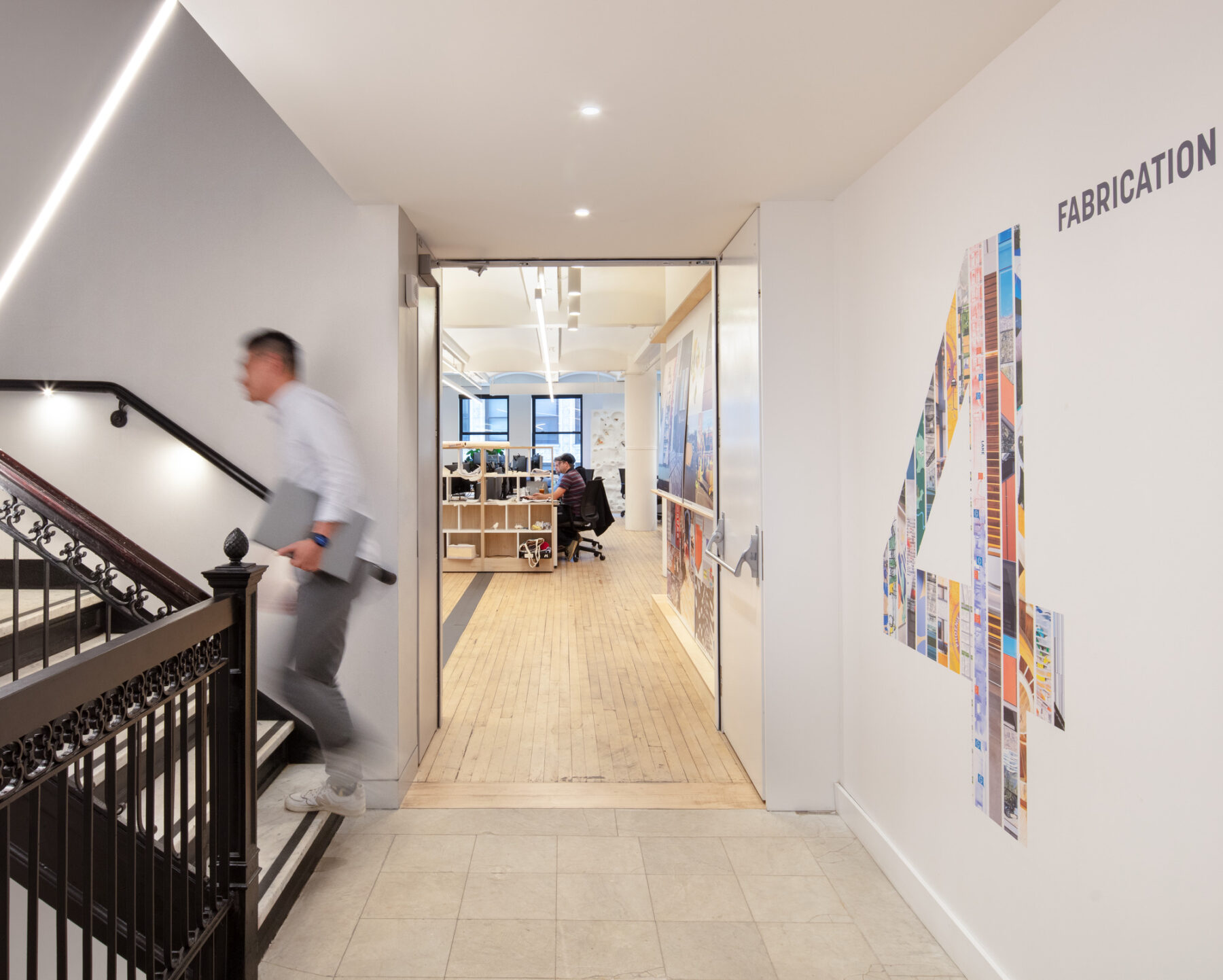
Amanda Lennon, NCIDQ is an interior designer and senior associate at Sasaki. Her work includes building repositioning, multi-family housing and specialty commercial spaces, and supporting the transition process for Sasaki’s recently renovated Boston studio.
When designing an office, being flexible and adaptable is key to success. As organizations strive to optimize their operations, right-sizing the office has become a popular topic of discussion. Sasaki used the design of our own Boston studio to test out techniques for right-sizing and flexibility, including unassigned seating.
Sasaki relocated our headquarters from a suburban office in Watertown, which had been our home for over 50 years, into a newly renovated building in downtown Boston in August 2022. The planning for this began well before our move, encompassing research into how we had been working and what the existing office was lacking. In the end, our design team developed an approach to right-sizing for the new space that included the implementation of unassigned desks. This not only tackled the right-sizing challenge head-on, but also addressed technology-related problems. It has also opened up opportunities to incorporate a greater variety of workspace options, a feature that was lacking in the old space.
Our firm began critically evaluating the functionality of our primary Watertown office well before the 2020 pandemic. Rooted in statistical observations, we noted that around 60% of our employees would be present and utilizing desks on any typical day. The remaining 40% were engaged in meetings, on-site tasks, working from other locations, or taking paid time off. Concurrently, conference room demand was consistently high, often leading to overbooking. We also faced the issue of having the wrong size rooms in our old location. We had more 12+ person rooms than we needed, especially after a deep data survey found that most of our meetings were virtual and scheduled for only 3-4 people in the office. After collecting feedback from staff, our designers identified four themes that guided the design of our new Boston office (see video below).
When we began planning the new space and assessing our own needs, we found a need for a variety of meeting spaces, private phone rooms, and making room for groups to work. A balance of assigned and unassigned seating could provide the amount of desks we need on any given day and also the amount of shared space we need to work as a creative integrated design studio. By taking the same amount of square footage, we could also use the office differently and add spaces for events, gatherings, lunch and the Sasaki Foundations SEED program which hosts nearly fifty high school students each summer.
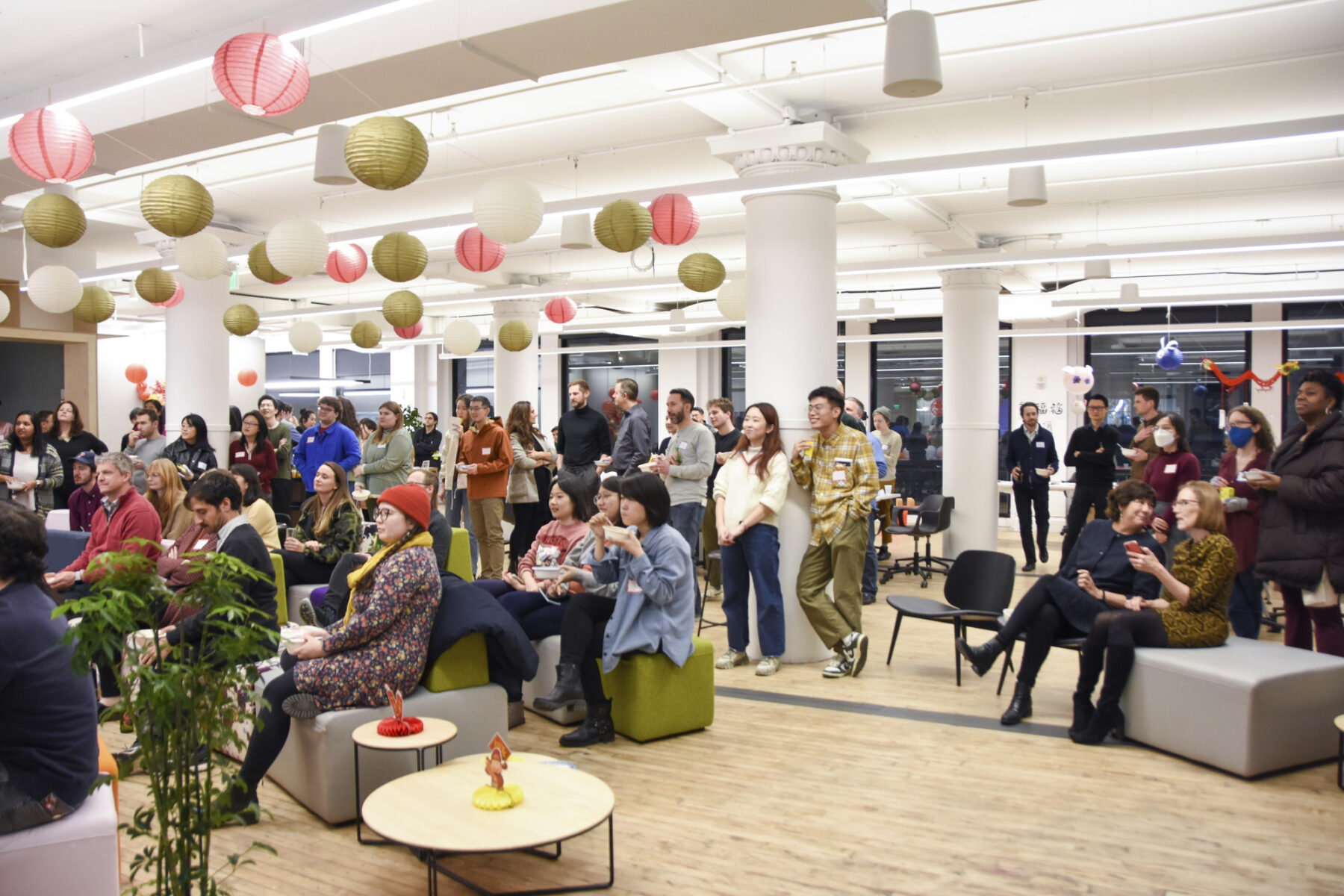
The decision to introduce unassigned seating made room for amenities like our special event space, here seen as the setting for the Lunar New Year celebration
Our new space uses about 190 square feet per person, about the same as in our old space. We use an online reservation system to book one of the 172 desks we have in the new office, which provides desks for 60% of employees assigned to this location. However, there are numerous additional places to work alone or with others which more than doubles the total workpoints (as opposed to desks).
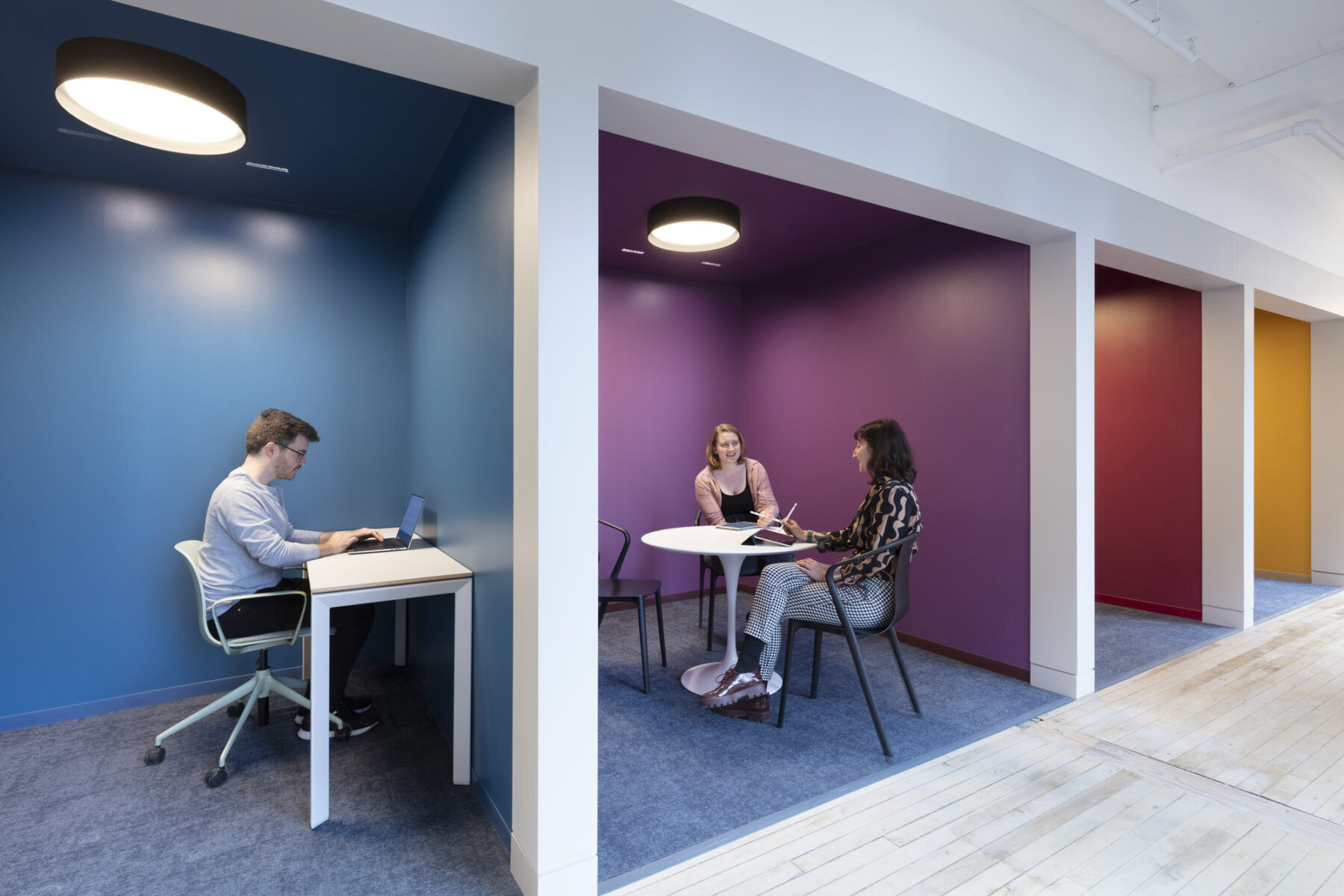
Semi-private nooks on the quiet floor offer an alternative to workstations
With the square footage freed up by having some unassigned desks, each floor has three or more smaller meeting rooms and small phone rooms, ideal for one person, available on a first-come-first serve basis. The office also offers diverse seating options in open areas from large high-top tables, to open collaborative areas, to comfortable lounge furniture. These alternative seating options cater to those who prefer a more relaxed and flexible work environment.
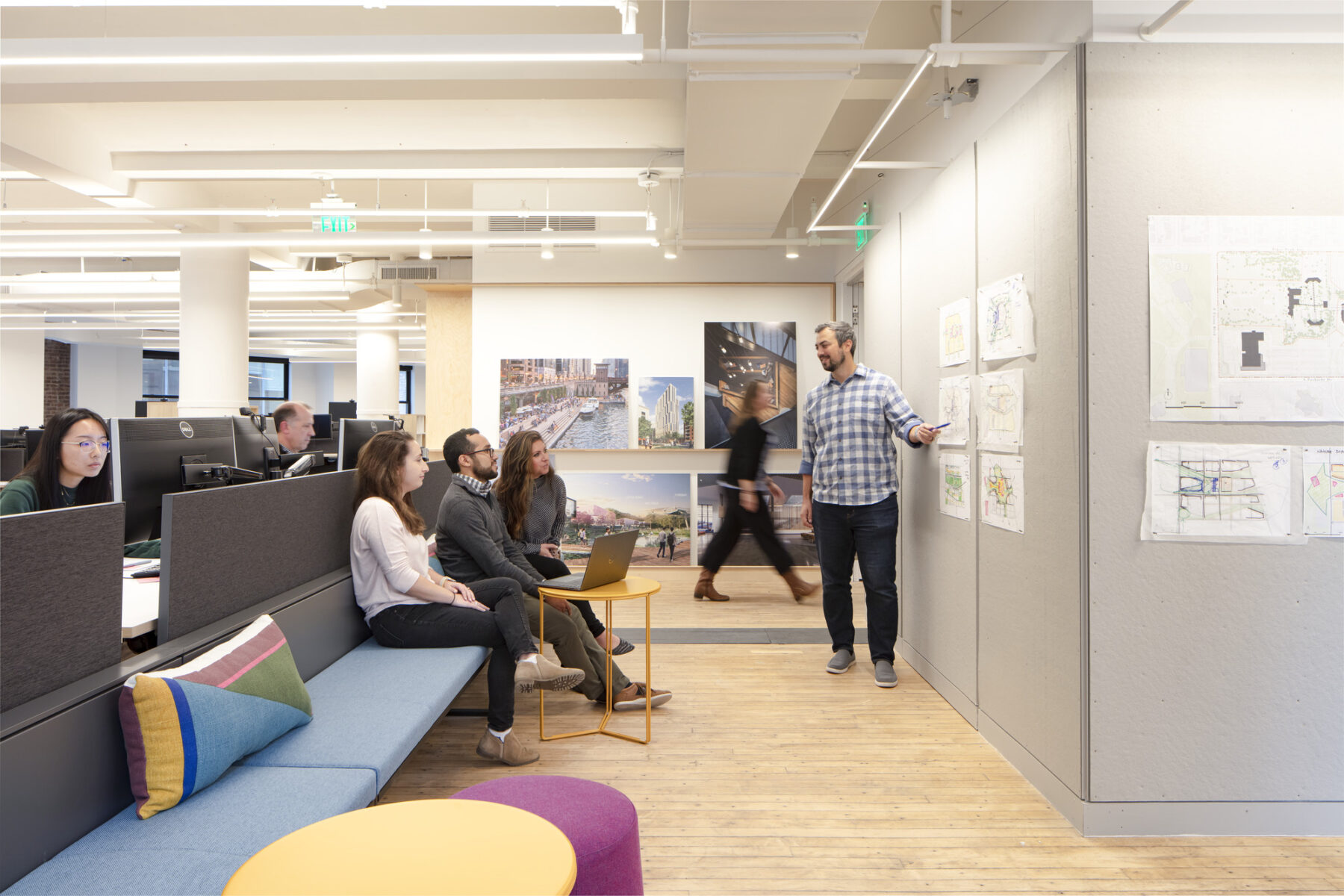
Each floor has a space for informal pinups as well as drop-in or reservable rooms for small meetings
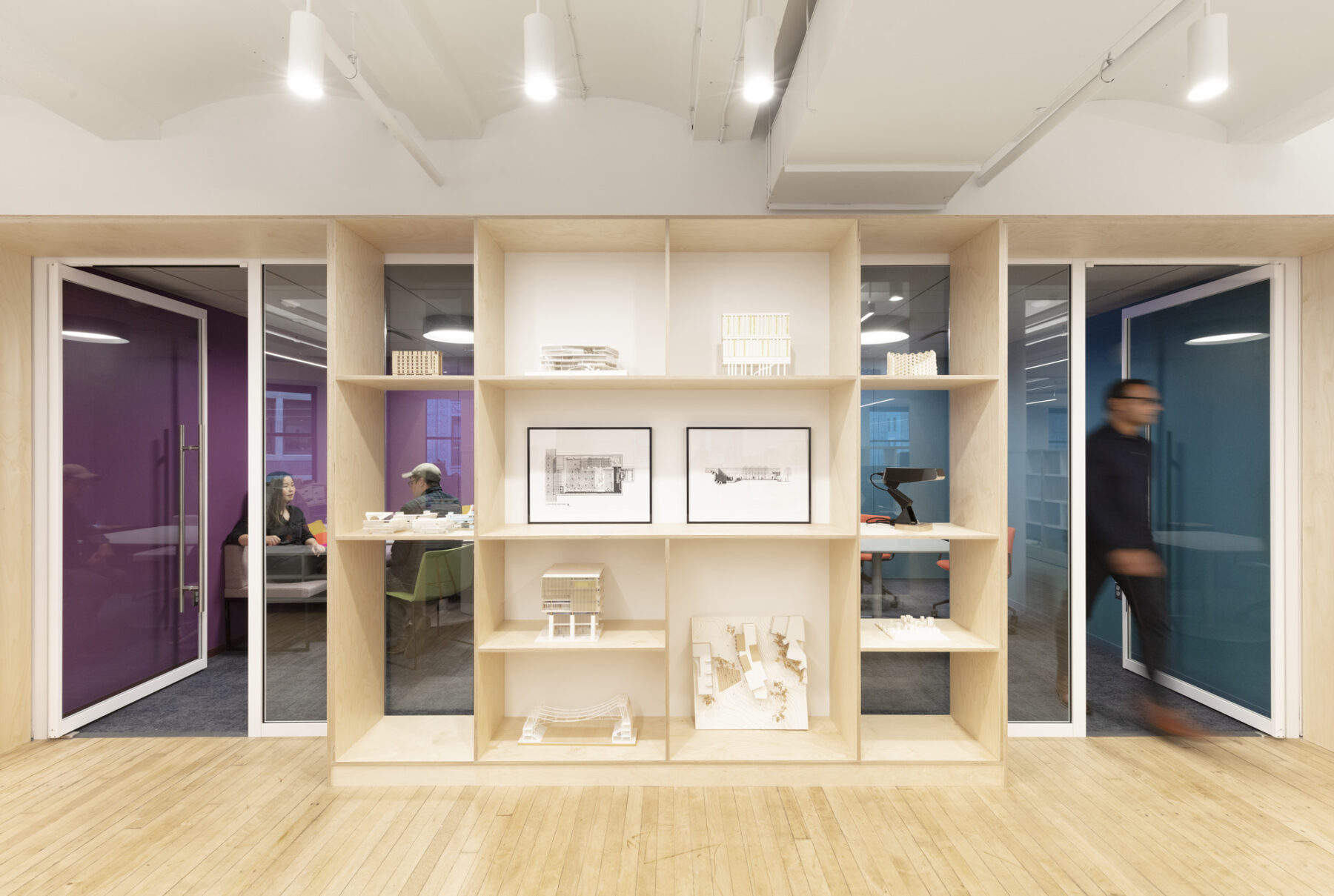
Embracing the idea that fewer assigned seats meant more flexibility, we turned our new office into living proof of how unassigned seating can support a more versatile office setup. More importantly, the efforts we undertook to understand our needs at a deep level have continued to yield results up to the present day, affecting how individuals use the office on a daily basis.
The move to more unassigned desks brings to light an important realization—work is no longer confined to a specific place or time. Productivity isn't solely measured by the hours spent at a desk; it's about achieving meaningful outcomes.
Transitioning to a mix of assigned and unassigned desks requires a shift in mindset—not just for leadership, but for employees as well. Initially, employees found it challenging to adapt to a more fluid workspace, as it required them to let go of their familiar routines and limit their office possessions.
Our team of designers, administrators and leaders have gradually uncovered how including unassigned desks into our office setup can work best for them. Some prefer a quiet corner for focused tasks, while others thrive in the collaborative buzz of open areas. Many find that mixing these various ways of working throughout their day makes them most productive. This flexibility empowers individuals to tailor their work environment to their unique preferences, resulting in increased engagement.
The move to more unassigned desks brings to light an important realization—work is no longer confined to a specific place or time. Productivity isn’t solely measured by the hours spent at a desk; it’s about achieving meaningful outcomes. This paradigm shift encourages employees to explore alternative workspaces, collaborate with colleagues more effectively, and strike a balance between individual focus and team interaction.
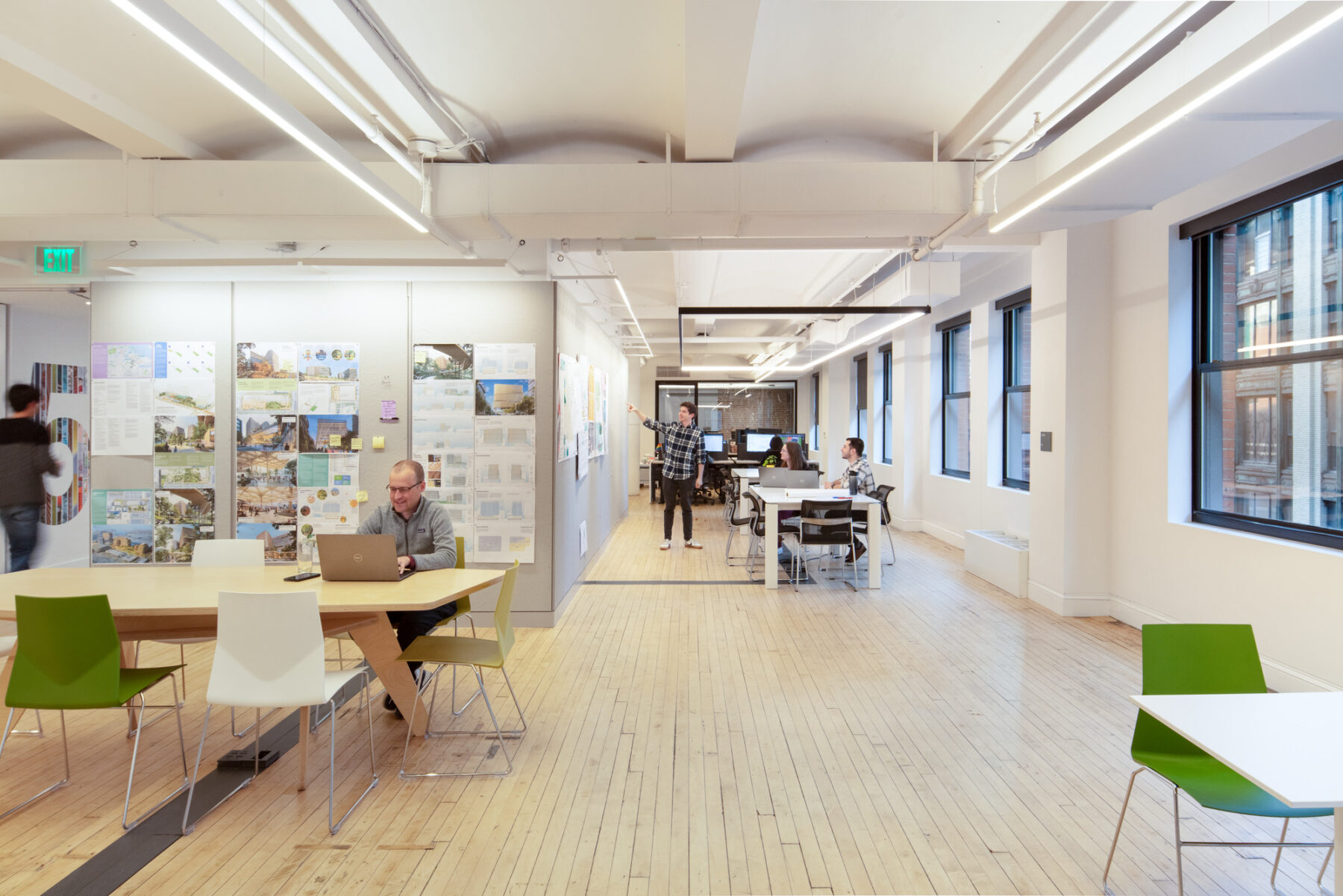
The introduction of unassigned seating asked employees to shift their mindset, letting go of familiar routines and limiting office possessions, in exchange for amenities and varied types of workspace
The goal of our organization was not immediate gratification, but rather a sustainable, long-term transformation of how we work together and integrate our practice.
As with any significant change, the road to success is paved with consistency. Messages communicated consistently about the benefits and goals of the balanced desk approach build understanding and buy-in over time. Teams have realized that the new approach has been designed with their best interests in mind, promoting collaboration, creativity, and a healthier work-life balance.
A well-defined implementation plan, supported by thorough communication, helps ease employees into the new system. Patience at every level is essential, as it takes time for individuals to adjust to new ways of working. The goal of our organization was not immediate gratification, but rather a sustainable, long-term transformation of how we work together and integrate our practice.

Sasaki undertook a nine-month campaign of internal communication to prepare returning employees for the new office, including the behavioral shifts necessitated by unassigned seating
Unassigned desks also offer a practical solution to technology challenges. Historically, employees often faced issues with connectivity and compatibility when moving between different workstations and meeting rooms. Setting up consistent technology configurations at desks has been successful, resulting in a more streamlined and effective work experience when we are either all in person or all remote. In practice, our office is still smoothing out technology in meeting rooms, especially in hybrid meetings.
Some people still want to have their own seats, and to meet this balance, pods of desks have been designated for a few long-term project teams, as requested. We are collecting data about how the office is used so we can better understand our patterns of use and adapt the office to our needs.
As companies communicate the benefits of a flexible approach and demonstrate their commitment to it, individuals discover how to make new desk setups work for them, unlocking the true potential of the modern workplace.